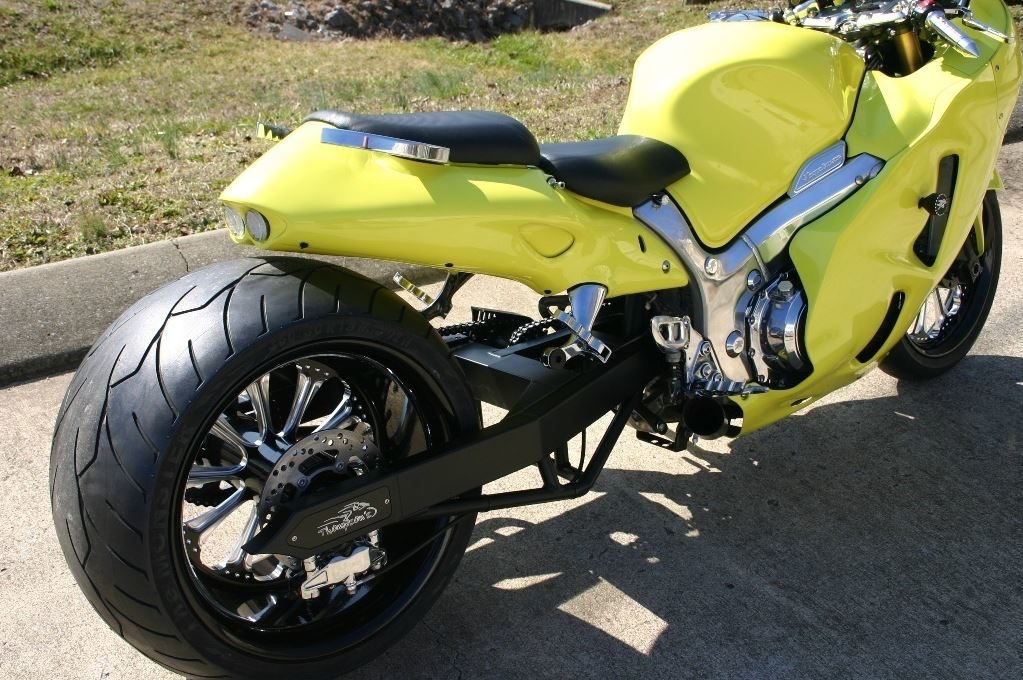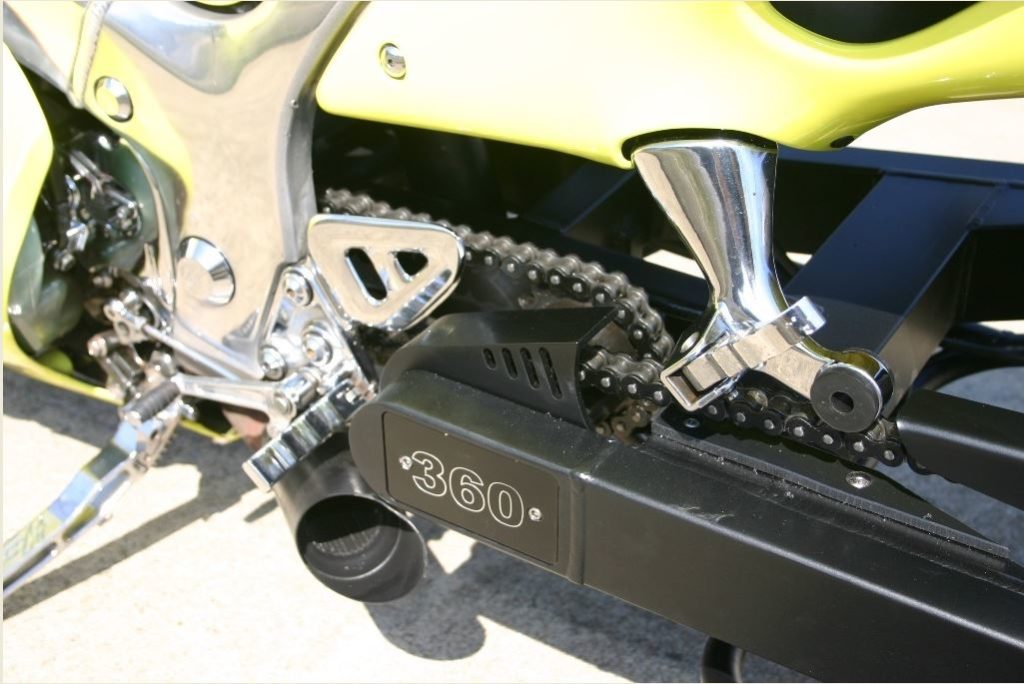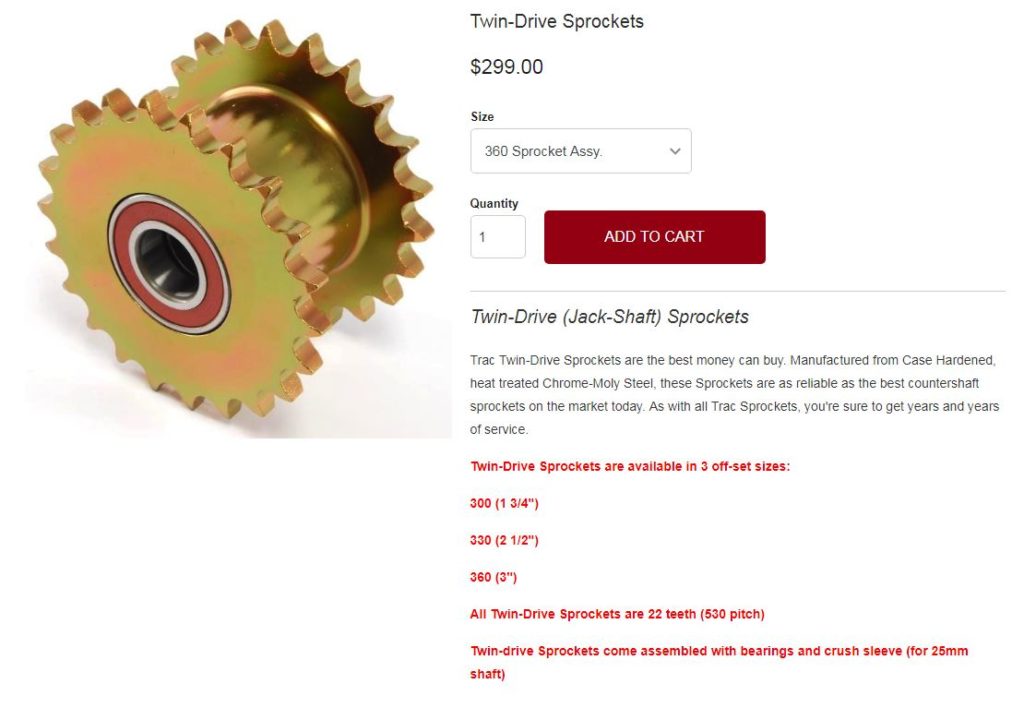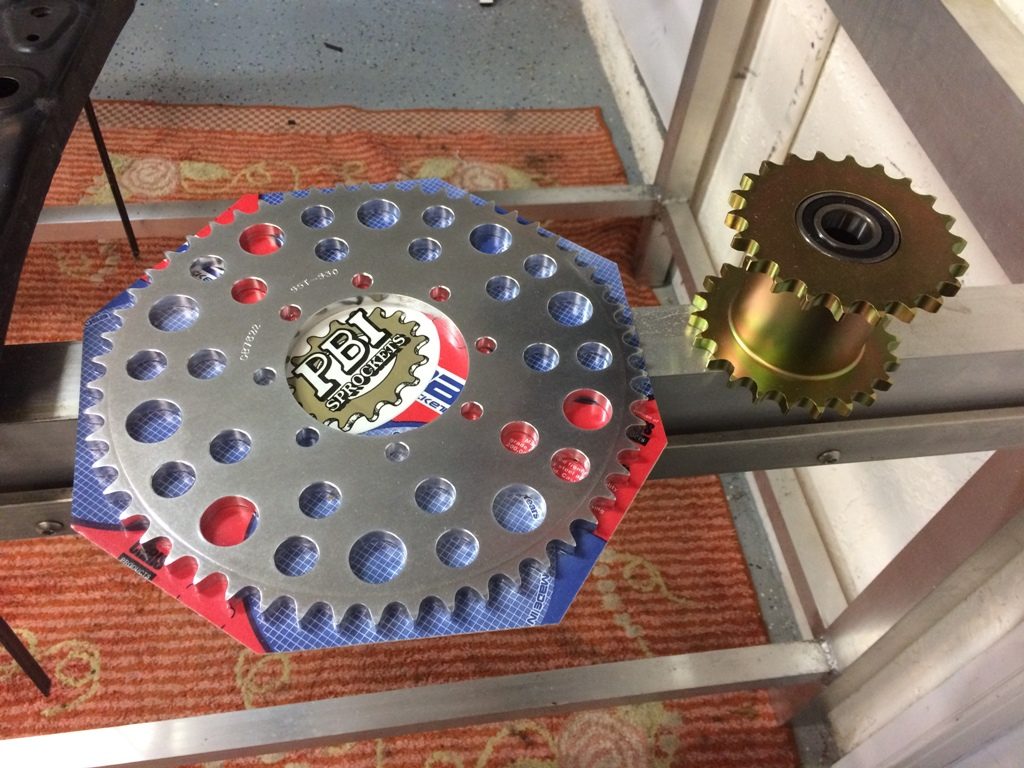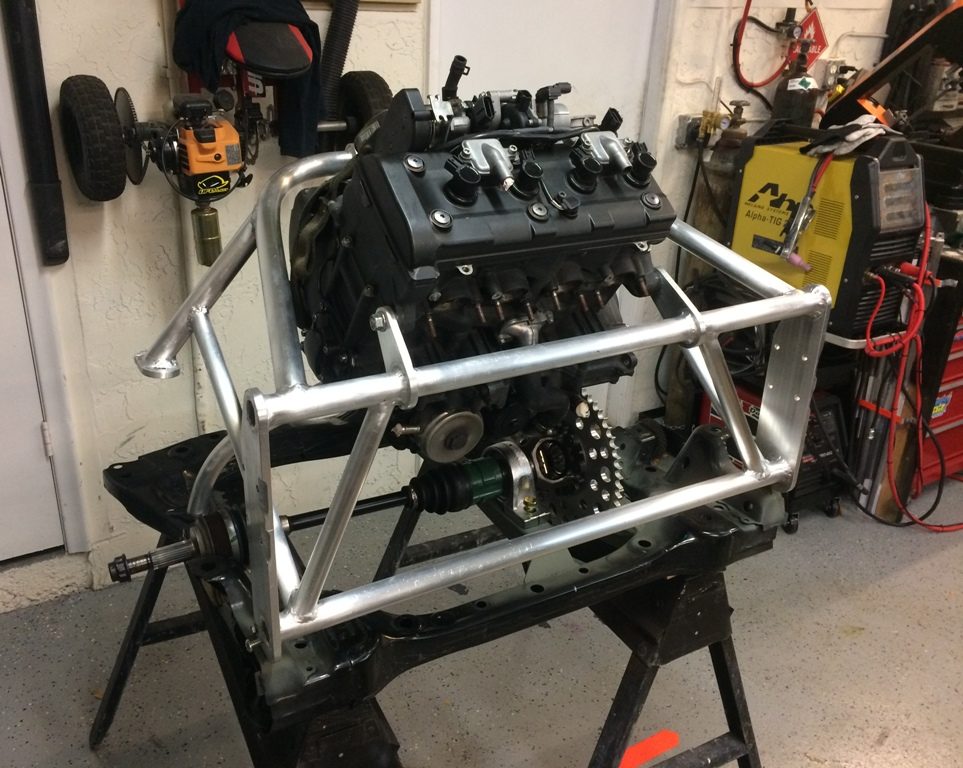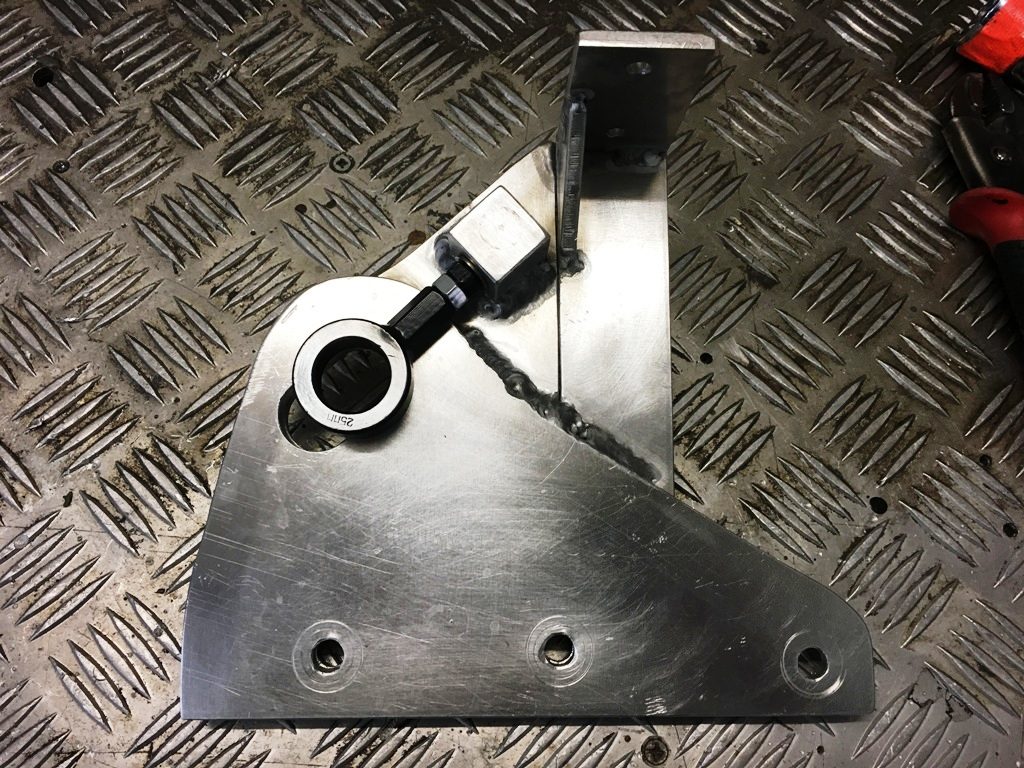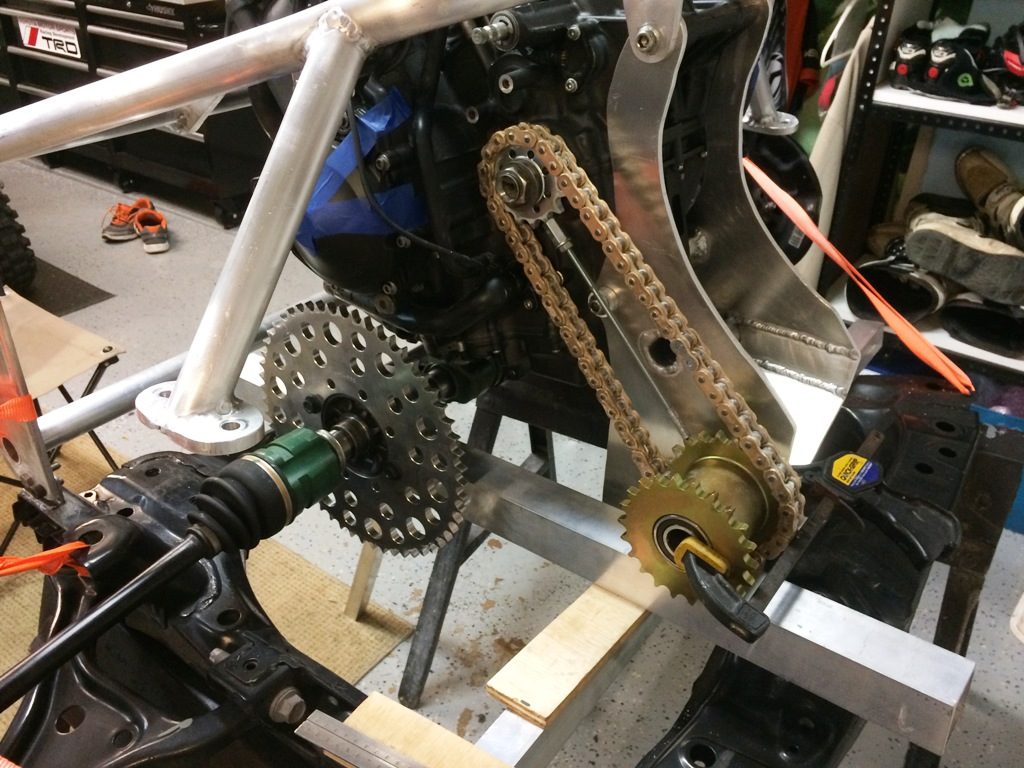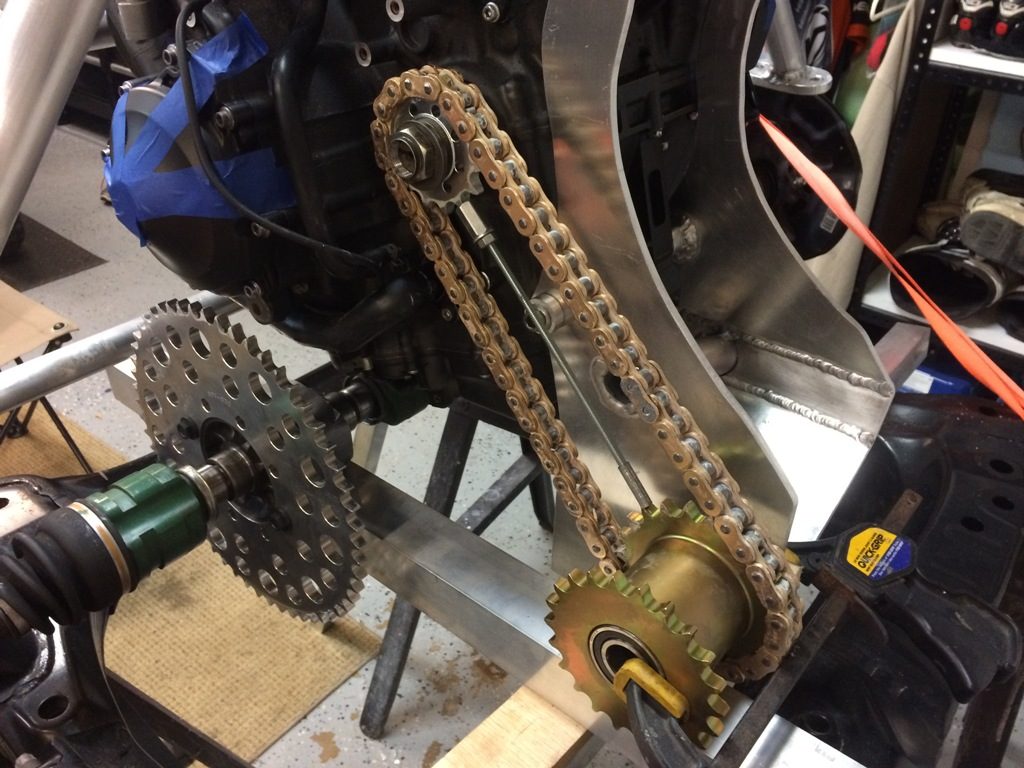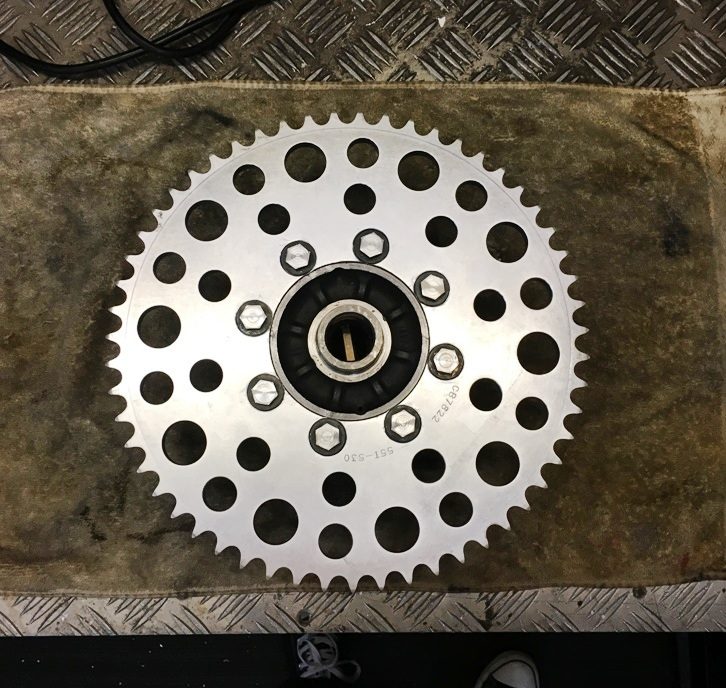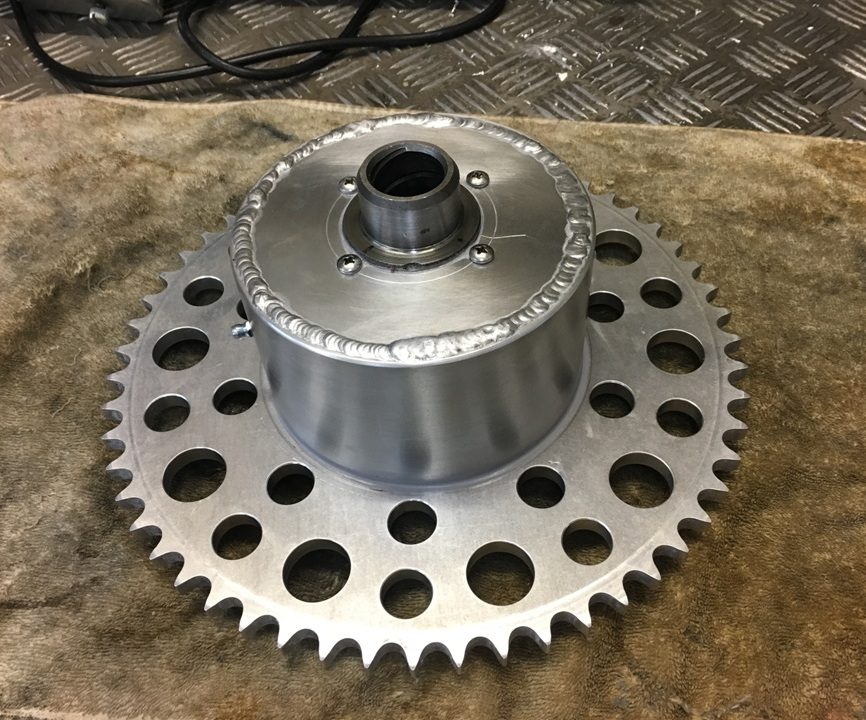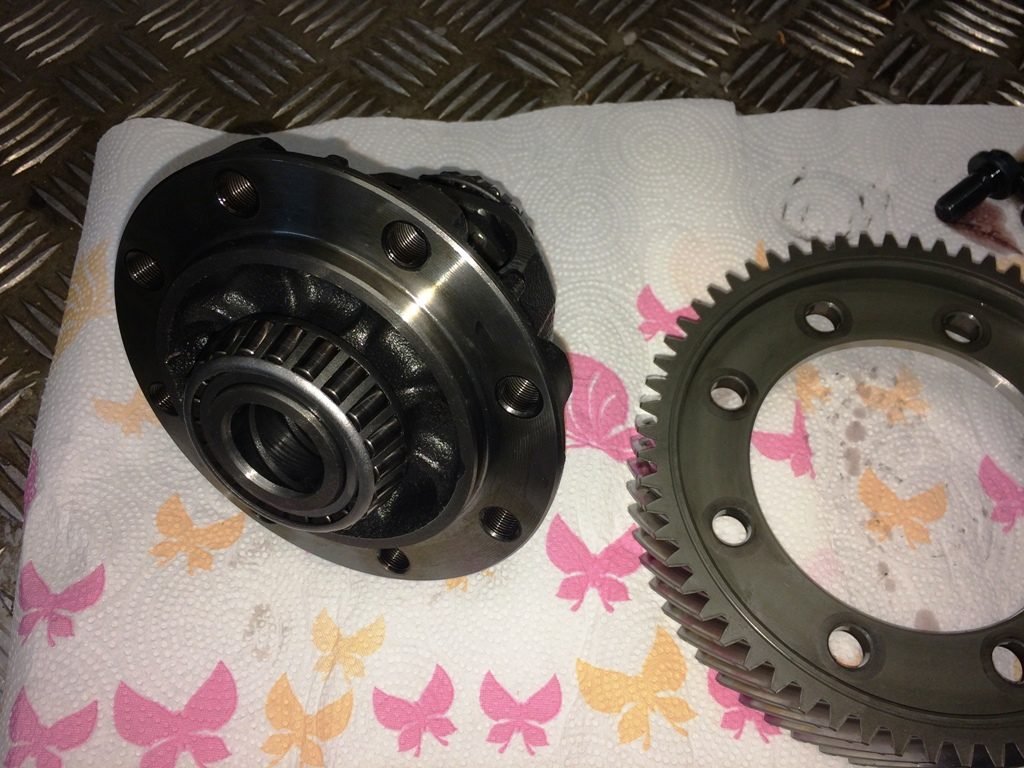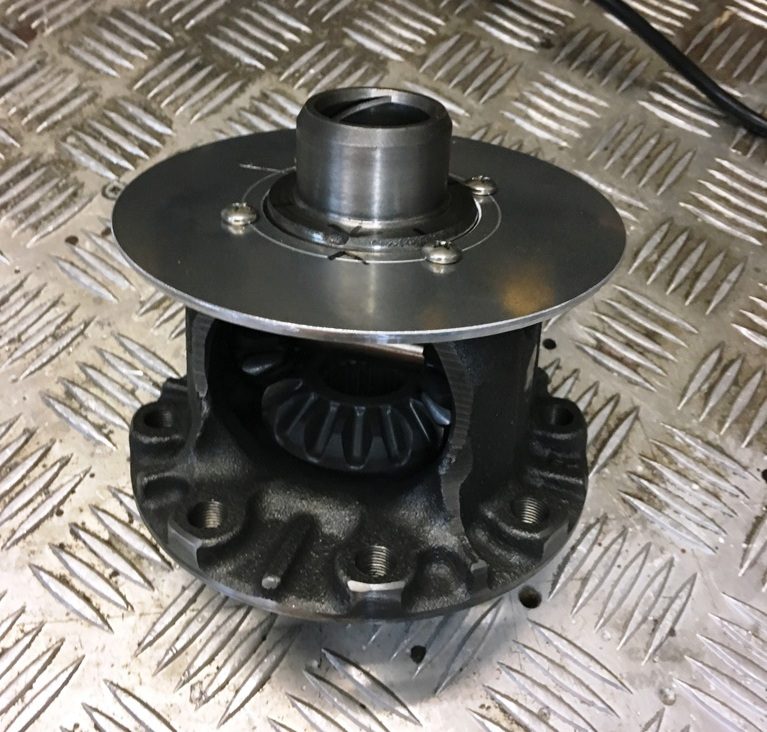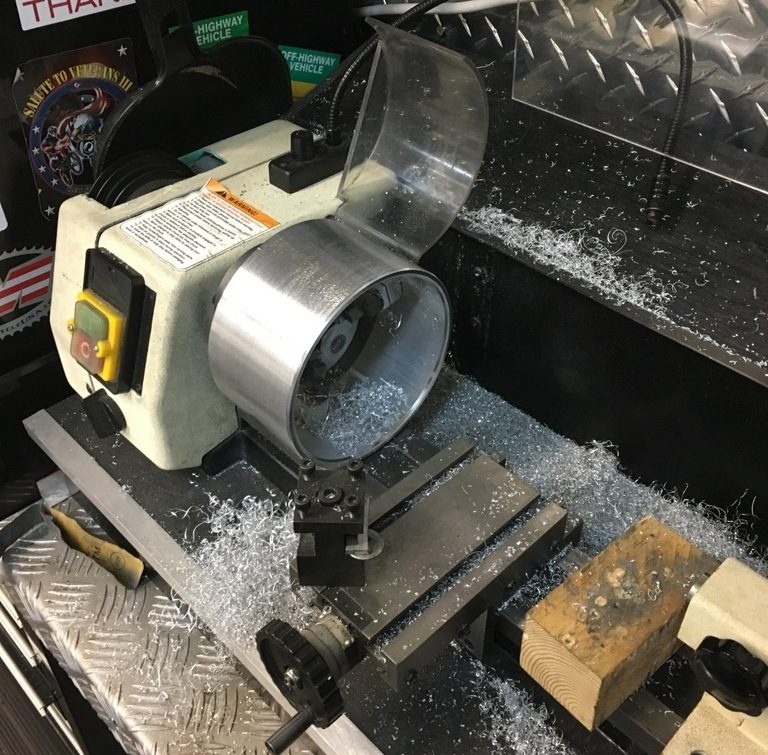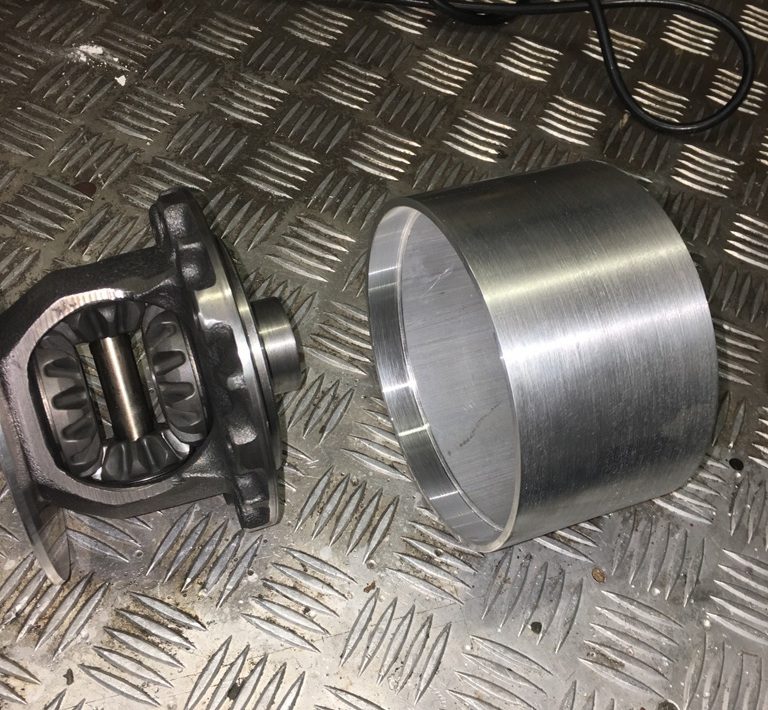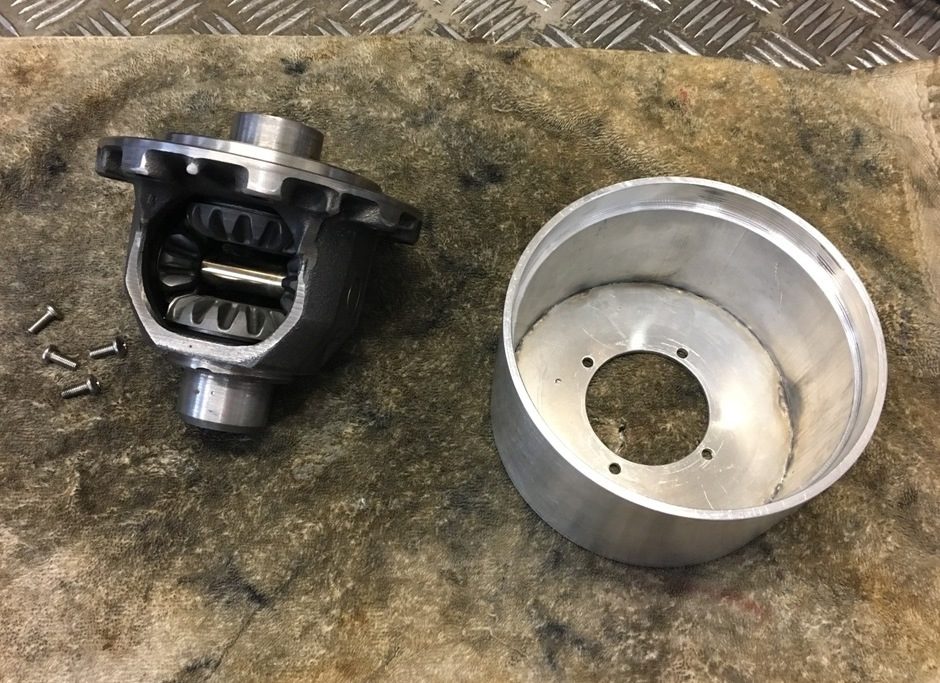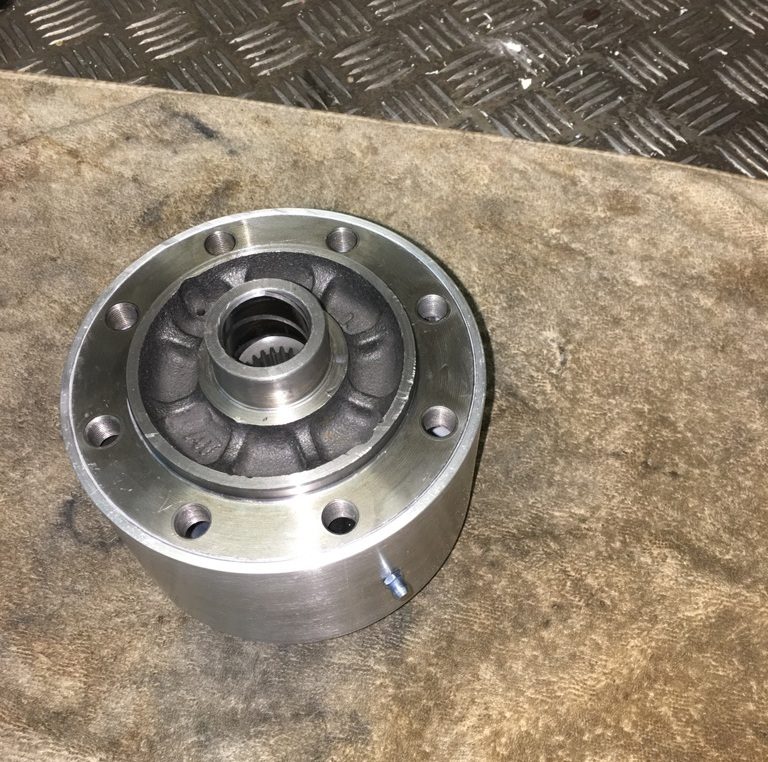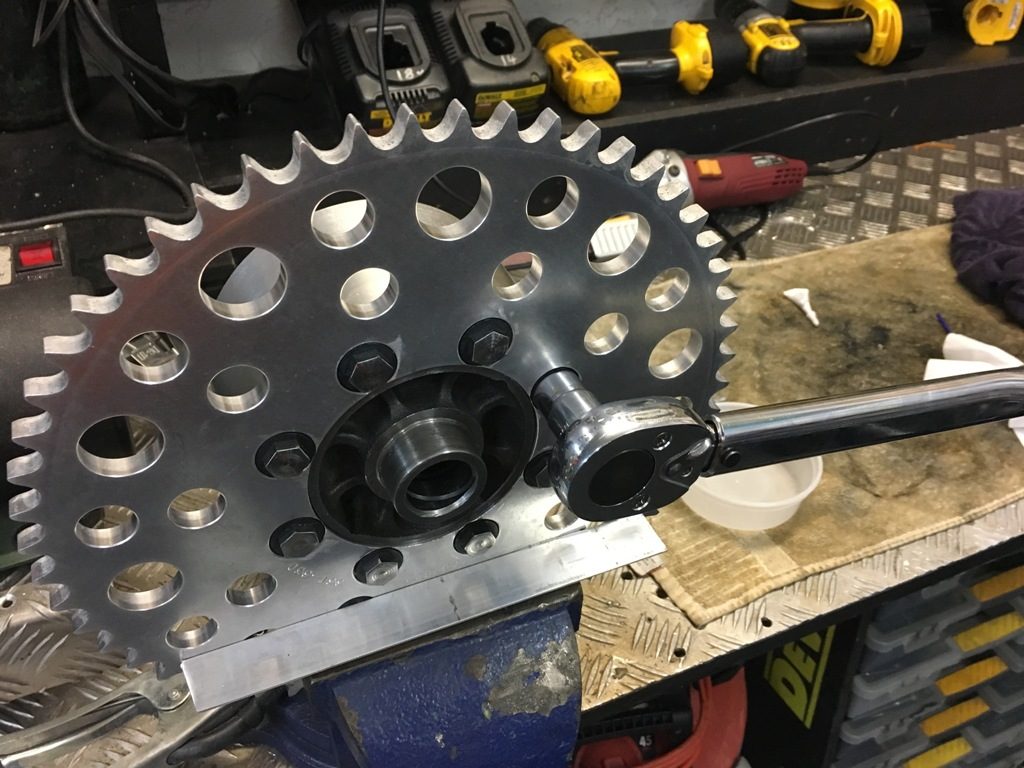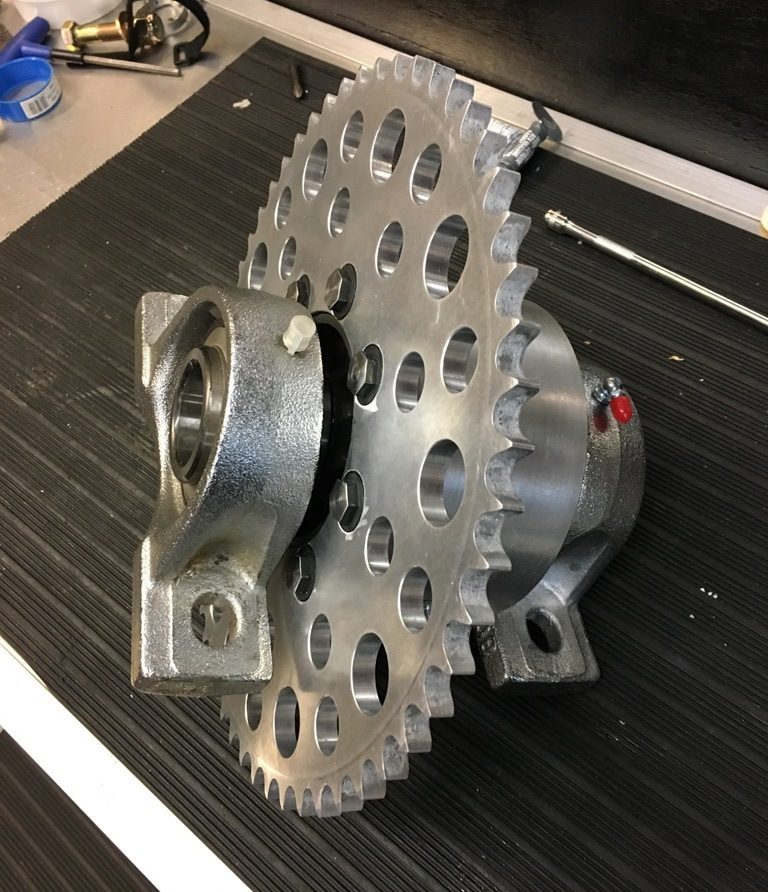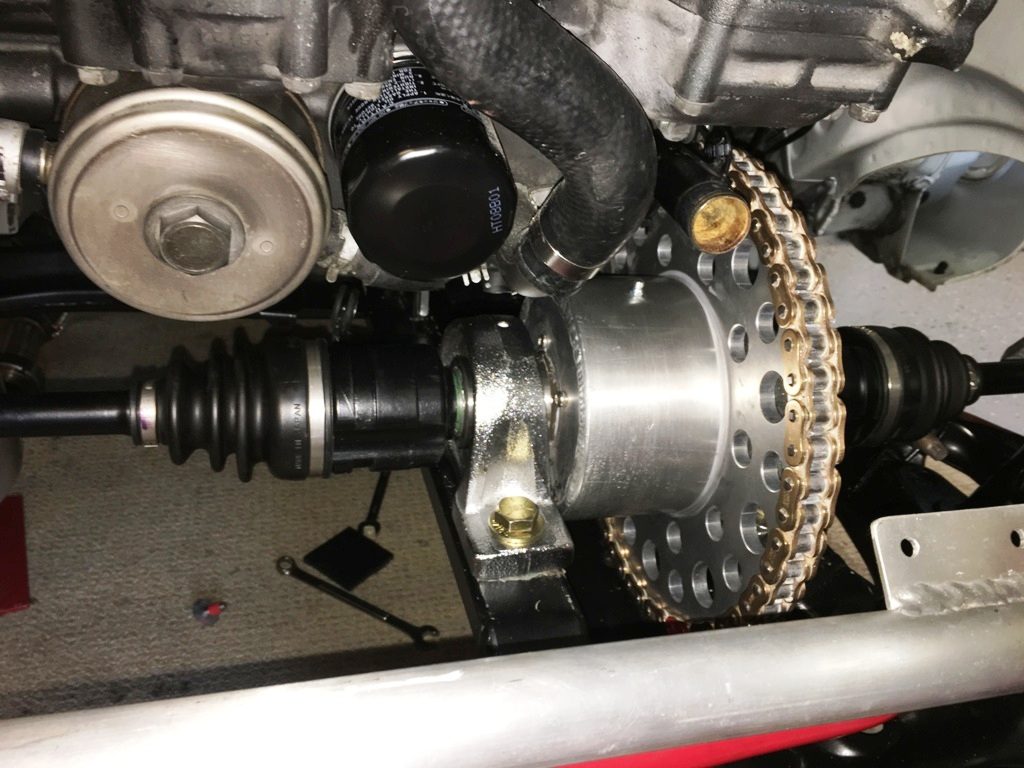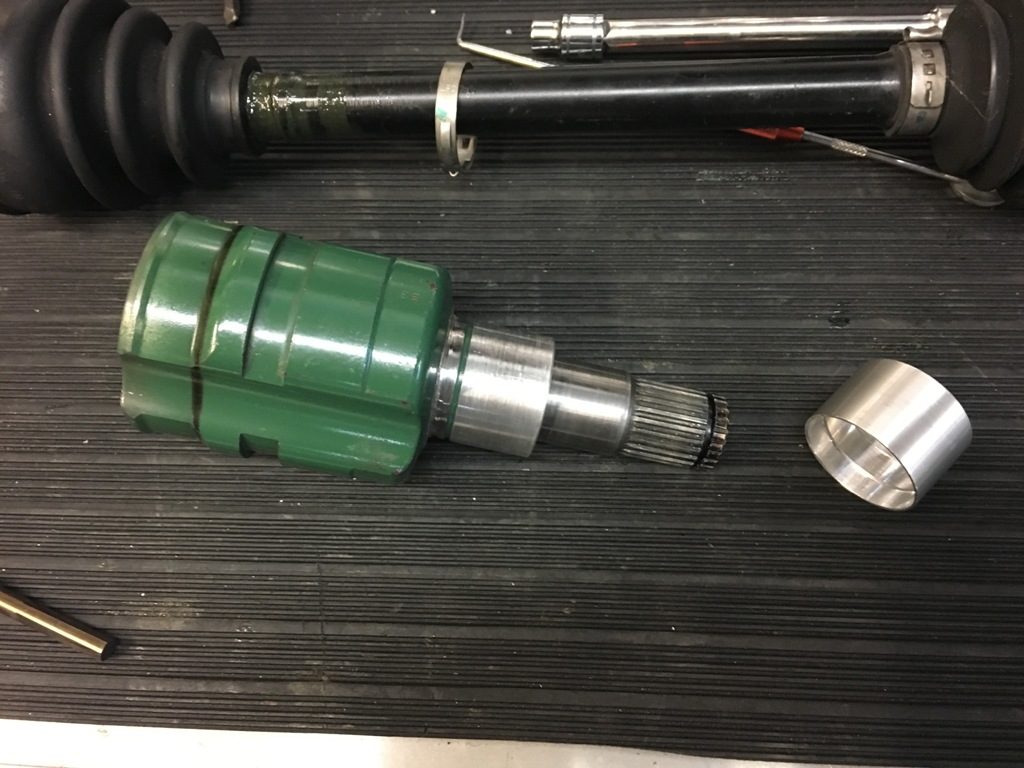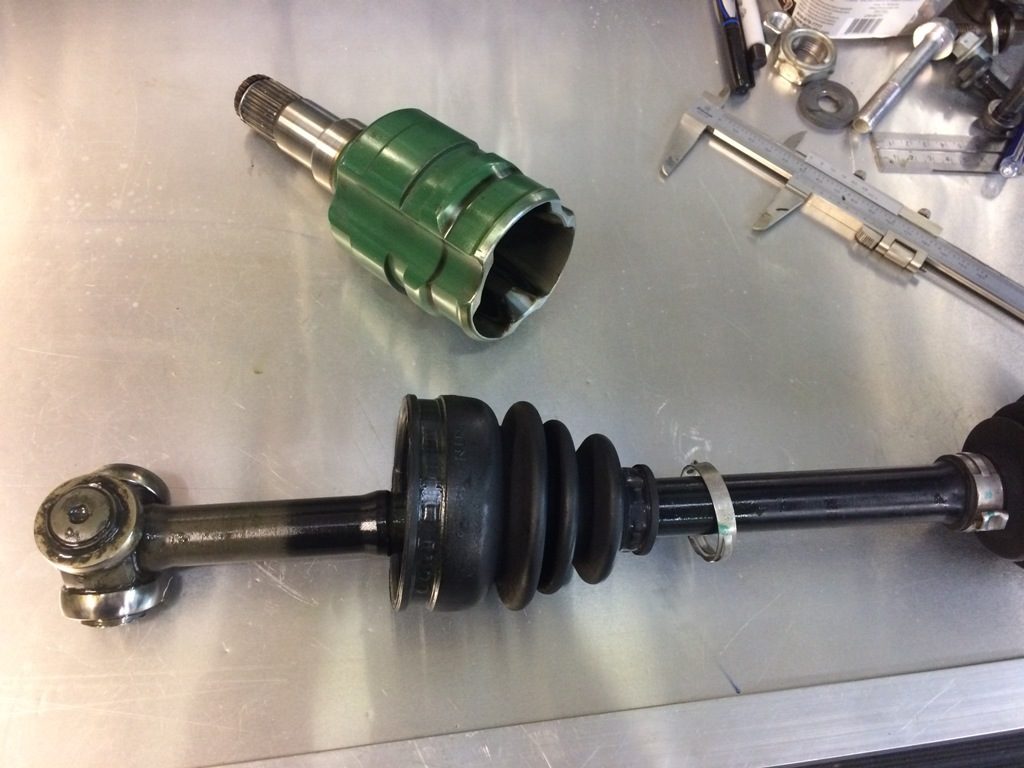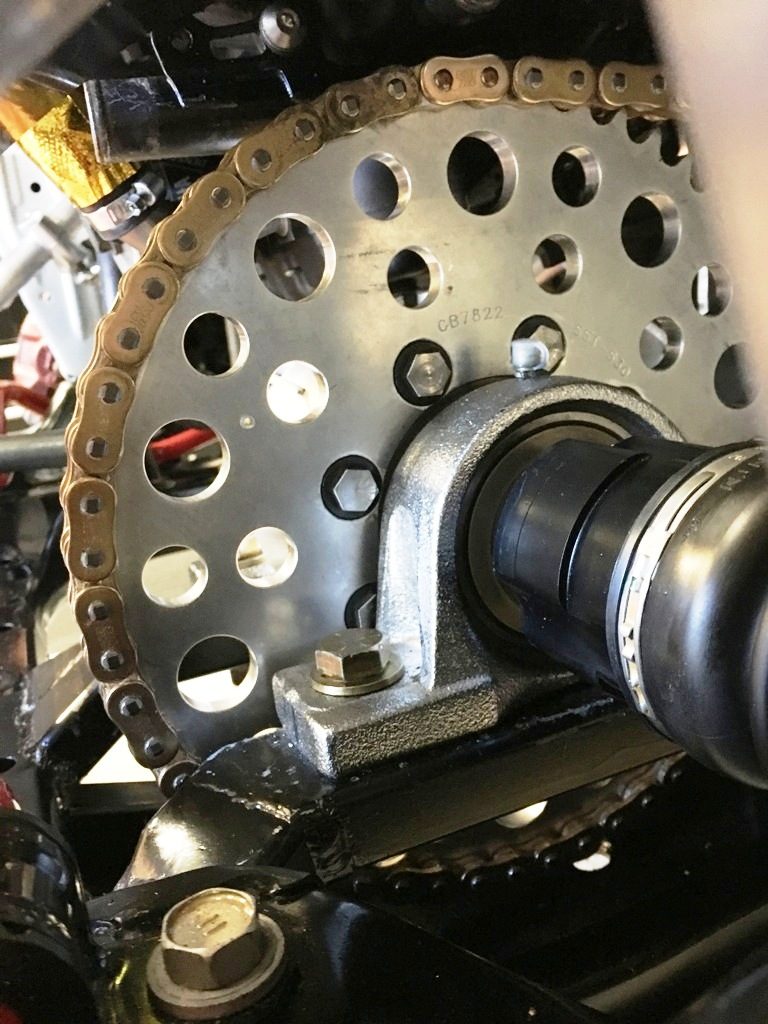Connecting it all together
Without question the hardest part of the whole project was getting the drive system figured out.
Transferring the power from a Sprocket drive R1 motorcycle engine to a car differential is not something you can just buy off the shelf, and considering the IQ transverse front wheel drive configuration is a little bit different from standard front wheel drive cars I definitely had my work cut out.
As always I searched the internet for ideas, but that was a mixture of home brew mashups and expensive drive systems that were not adaptable to my special R1 into IQ scenario.
Somehow the drive had to go out and under the engine.
So after some pretty extensive research I pulled in some good data, came up with a plan and figured it out.
I planned retain the R1 sprocket output, link that to a double drive sprocket, normally used on high horsepower Drag racing sport bikes and then connect that to the diff sprocket.
Like this one shown below...
Trac Dynamics Sprocket
I located a company that manufactured Twin drive sprockets that had some pretty good reviews. Trac Dynamics had exactly what I needed to get the drive out and under to the front diff. The only down side was the cost, over $300 with shipping...ouch. but I guess the the quality was worth it.
Spec on the sprocket I used link is Here.
Custom Diff Sprocket
I had to get the drive onto the IQ differential using a larger sprocket. I located a company called PBI Sprockets that manufactured custom made Aluminum sprockets in a variety of sizes.
I placed an order on line for a 55 tooth 530 pitch sprocket and 3 days later it was delivered to my door! PBI was able to machine the center to exactly the correct size and the bolt pattern and spacing was also exactly as I ordered it, Outstanding service PBI !
This is what I came up with..
I had to get the chain drive out off the R1 drive sprocket output shaft, then out to the twin drive idler sprocket, then under the engine to the front Diff and drive shafts. The diagram above gives a pretty accurate idea of the layout. All I had to do now is fabricate a way to hold it all in place.
The best EK Chain
I researched " strongest Motorcycle chain" and nearly all the reviews rated this EK 530 ZVX3 chain at the top of the list. It has a tensile strength in excess of 11,000lbs and is rated up to 250HP. Cost? $200 plus $24 for 3 connecting links. Expensive, but cutting corners on such an important part would be unwise.
Here is the spec: EK Chains.
All the moving parts
The photo shows all the parts that connect the engine to the drive shafts. I am limited by space so room to get all this under the hood is going to be a challenge. Final gearing is 15t on the engine, 2 X 22t on the idler sprockets and 55 on the diff sprocket. I used Gearing Commander to figure it all out, this gives me a theoretical top speed of 128mph. The calculator used the R1 engine spec, with the overall IQ tire diameter to work out the final gearing. The calculator link is also Here.
Removable subframe
The IQ has a removable front sub-frame (the black painted part shown above). So working on the drive system out of the car was made a lot easier for me. Once I had the Aluminum Engine cradle fabricated it was just a case of putting it all on a worktable and mocking up the drive system. Engine cradle fabrication link is Here
Main rear engine Mount
I chose to use Aluminum wherever possible, mainly due to lightness and it was easy to work with. The 2 rear engine mounting plates are both made of 3/8" 6061 Aluminum, the inner one incorporates the idler sprocket shaft mounting. I added adjusters so I could get the drive chain to the correct tension, and then adjust it again when I needed to.
Mocking it up
The front diff was in a fixed position due to the drive shaft lengths and placement of the sprocket that was bolted to the diff. The R1 output sprocket was also in a fixed position so my biggest headache was aligning the drive from one and then across to the other. Luckily I had a cunning plan.
measure twice
By careful placement of the engine I was able to get both the R1 output sprocket and diff sprocket to be Exactly on 3" centers. Which is exactly the distance I could purchase the double idler sprocket in! So my biggest problem was now over, I just needed to brace up the idler plates add some brackets for a chain splash guard and bolt it all together. now onto the front diff...
Making the diff work
I had originally planned to buy a small LSD to use the IQ, however before laying out almost $1k on a new diff I decided to take the existing one out of the IQ, that way I could used the same drive shafts and keep the front end somewhat stock. After doing some research the stock diff and drive shafts should more than handle the 160hp output.
The finished diff with casing
Here is the diff all ready to go in the IQ, its a sealed unit packed with Lucas oil grease, hence the grease nipple on the side, there is also a vent tube when it gets hot to release the pressure.
here is how I modified it..
Closing up the diff
An open diff would not last long, so I started fabricating the casing to hold the lubricant. First I made the end cap from some 3/16 aluminum plate. This was turned down to the inside diameter of the casing tube. The end cap was fixed to the diff using 4 stainless set screws loctited in place.
Loctite and torque
I very rarely need to use Red Loctite Threadlocker
But seeing as these bolts were holding on my main drive sprocket I decided to use it. I looked up the torque settings for the gear ring bolts so they were tightened correctly too. I had to machine the heads down 1/8" to clear the bearing blocks, but there was still plenty of meat left on the bolt heads after.
Adding the bearing blocks
To make the whole diff rotate with the drive shafts I needed to use some pretty hefty sealed bearing pillar blocks. The 2 guys should ensure the front diff does not get out of alignment once its all bolted in place. They 1.5" bore that is a push fit over the diff housing where the old bearings used to be located. I had to use sealed bearing as they are not lubricated like the old diff was from inside.
Drive shaft modification
The driveshafts each had to be modified with a slip on Aluminum collar. I turned down the collars in my lathe so they would push fit over the end of the CV joints and take up the void where the old oil seal was located. In order to make an oil tight seal they were sealed in place with Toyota engine sealer. This is to stop any of the lubricant from the sealed diff leaking out around the joint.
